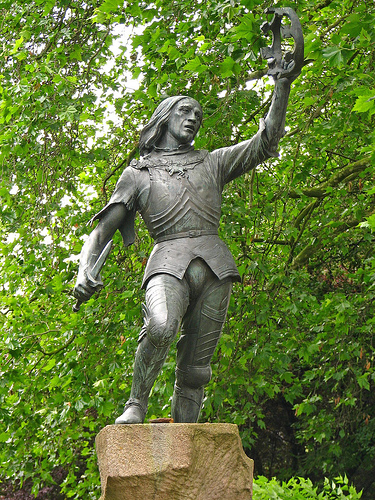Remains of England's famous king identified by mitochondrial DNA.
They say that history is everywhere in England, but I wonder how many people who used this particular parking lot realized that they were parking above the remains of Richard III.
Richard III died during one of the last battles in the War of the Roses. The last King of England to die in battle, his body was buried at Greyfriars, a monastic abbey in Leicester. The abbey was demolished in 1530 and the property subdivided and developed, which is how Richard III's body came to be interred beneath a parking lot. The remains were lost to history until they were unearthed by a recent archaeological expedition.
The archaeologists suspected, based on what they found of the corpse, that they might have the remains of Richard III. In order to test their theory, they matched the mitochondrial DNA from the corpse with a direct descendent of Richard III's sister, a cabinet maker living in Canada. The results came back an unmistakable match.
Richard III was only King of England for two years, but they were tumultuous years indeed. The last king of the House of York, Richard III came to power when his older brother died in 1483. Possibly after murdering two young boys who might have otherwise stood in his way. (The boys were ensconced in the Tower of London before Richard III's coronation, and were never seen from again.)
During Richard III's two-year reign he snuffed out two rebellions. One led by his former friend and ally Henry Stafford, and one by Henry Tudor (who would later become King Henry VII).
This hated king was evidently mistreated by his subjects after his death. He was found in an unusual position which indicated that his hands had been bound. His skull was intact, although there was evidence of two "severe blows." The archaeologists also found evidence that his body had been "mistreated," although in what fashion they have declined to say.
Richard III went down in history as a scheming, devious, misshapen man with a quick with and a quick temper. But in large part, this reputation hails more from Tudor propaganda than it does contemporary evidence.
After Richard III's death, his successors to the throne slandered his name to make their own reign seem more legitimate. In truth, Richard III was not too bad a king, and better than many. And while he may not have been particularly attractive, as well as suffering from scoliosis, he was hardly the deformed monster often described in historical texts.
